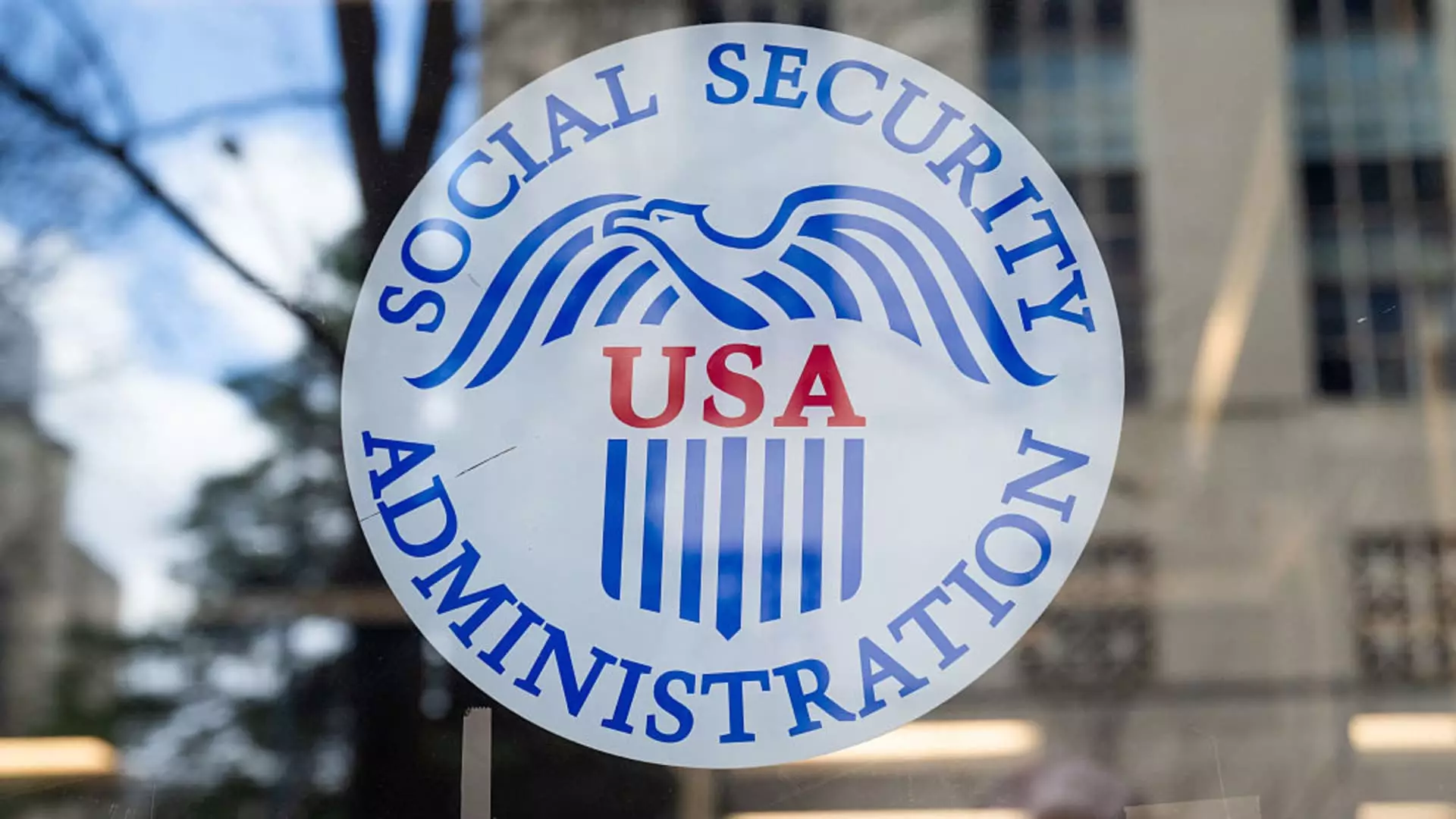The landscape of Social Security in the United States is one riddled with instability and uncertainty, particularly in light of recent actions taken by the Trump administration’s so-called Department of Government Efficiency (DOGE). As the nation grapples with ongoing debates surrounding welfare and entitlement programs, the changes being implemented at the Social Security Administration (SSA) raise critical concerns—not just for the agency’s functioning but also for the vulnerable populations it serves. The situation appears to be compounded by a reckless rush to implement changes that could ultimately threaten the very benefits the agency is designed to provide.
Disrupting a Lifeline for Millions
For many Americans, Social Security represents a vital lifeline, especially for seniors, individuals with disabilities, and those relying upon it for basic sustenance. But the recent decision to eliminate 7,000 positions within the SSA and close multiple regional offices—the intention ostensibly aimed at increasing efficiency—has alarmed many stakeholders. Experts such as Jason Fichtner, a former deputy commissioner, caution that these cuts could lead to a dramatic decline in the quality of services. The irony is not lost here: while the administration openly claims to protect Social Security benefits, its actions seem to suggest the opposite.
The implications of these cuts extend beyond mere inconvenience; they potentially jeopardize lives. Fichtner highlights a chilling concern—individuals with disabilities may face significant barriers in claiming their rightful benefits, possibly even risking their lives before receiving the assistance they desperately need. Such a morose possibility brings into stark relief how aggressive administrative changes can undermine essential support systems, highlighting a disturbing trend of prioritizing profit-driven efficiency over human welfare.
Risking Benefits through Reckless Upgrading
The plan to move “tens of millions of lines of code” from the antiquated programming language COBOL into a new system within just a few months raises immediate red flags. Rapid technological upgrades are essential, but doing so in an ad hoc manner is fraught with peril, as Fichtner observes. Traditional processes would advocate for incremental testing to identify glitches before a nationwide rollout—this is not just best practice; it’s a survival tactic for such a significant entity as the SSA. Yet, a frenetic push for modernization, devoid of thorough planning, overlooks the complexity and risks inherent in the undertaking, suggesting a negligence that could culminate in even greater chaos.
Concerns about the SSA’s capability to sustain uninterrupted benefits under such circumstances illuminate a frustrating paradox: while modernization is indeed necessary, the rushed manner may be counterproductive. It brings to the fore the unsettling question: at what point does the effort to “fix” the system cross into recklessness?
A Misguided Search for Fraud
As the DOGE promotes a campaign aimed at combating fraud, criticisms have emerged surrounding the agency’s focus on administrative efficiencies to the detriment of addressing critical funding issues. Experts assert that tackling perceived minor fraud serves as a distraction from the more pressing financial realities facing Social Security, including the impending depletion of trust funds. Critics such as Romina Boccia argue that these misguided crusades divert attention from the legislative reforms desperately needed to secure the program’s future.
An agency that operates on a shoestring administrative budget—under 1% of its outlays—is hardly the battleground for significant financial reform. Advocating for reductions in the workforce while simultaneously promoting efficiency in the face of fundamental funding crises feels not only misplaced but dangerously naive. This line of reasoning echoes a broader trend in contemporary governance—where the chase for superficial efficiencies can eclipse critical long-term structural sustainability.
The Looming Crisis of 2033
The specter of 2033 hangs heavy in discussions over Social Security, as projections reveal that the retirement trust fund alone could face depletion by that year, leading to just 79% of benefits being payable. The urgency of these projections raises substantive alarms—if Congress fails to act, millions are poised to feel the repercussions. The current mismanagement and shortsighted initiatives from the administration could serve as a significant obstacle to overcoming systemic challenges, leading to a cycle of hardship and frustration for beneficiaries.
The lessons from history remind us that neglecting infrastructure—both technological and institutional—ultimately leads to crises. The stakes are too high for the government not to prioritize a more nuanced, informed, and human-centric approach to managing such an essential social program. The time for deliberation and thoughtful reform is now; the lives of millions hang in the balance, demanding attention that transcends simple efficiency rhetoric.


Leave a Reply